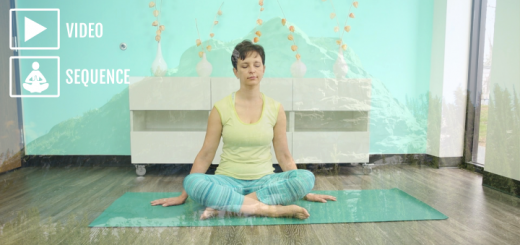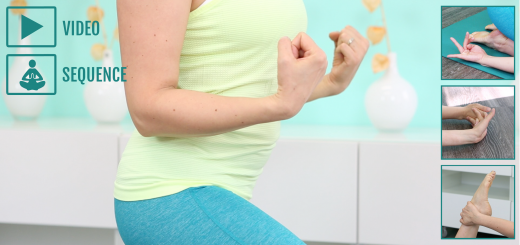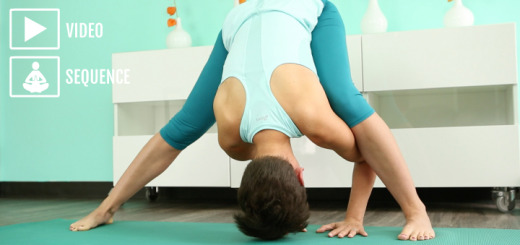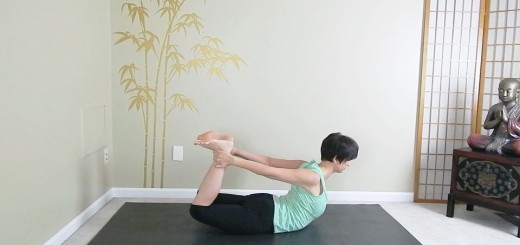Yoga for happy bones
0Muscle wasting is a common feature of osteoporosis, which also contributes to the weakening of bones. Bones get stronger in response to muscular pull in all directions. When muscles are stronger and more toned, they pull harder on bones, causing them to become stronger, too. Gravity and resistance are the two main factors that help strengthen both muscles and bones; that is why weight-bearing activities have long been recommended for osteoporosis. In addition, it appears that any kind of mechanical leverage and dynamic tension can be beneficial to bone health. Dynamic tension happens any time the muscle is engaged, when one muscle group opposes the action of another. Loren Fishman, MD and Ellen Saltonstall in their book “Yoga for Osteoporosis: The Complete Guide” write: “Muscular activity stimulates bones to strengthen themselves much more vigorously than weight-bearing alone, and in doing so, can protect the bones from inordinate thinning. This effect seems to operate even in conditions of calcium deficiency.” It appears that the duration of the pressure is an important factor. Some studies show that it takes only eight seconds of dynamic loading to initiate physiological processes that prevent the weakening of bone. That is why holding yoga poses for several breaths, especially in standing weight-bearing positions is beneficial for bone health.
These two yoga practices emphasize muscle strengthening to promote bone health. They are designed for different levels of ability and different stages of bone loss.
Strengthen your bones by toning your muscles
The stresses applied to bones via muscular contraction during physical activity are essential to maintaining bone strength and bone mass. In this yoga practice, we emphasize muscle strengthening by holding poses for several breaths. We mainly focus on the muscles that move and support the skeleton areas most vulnerable to loss of bone density: the hips and the spine. Research shows that you have to maintain the muscular contraction for at least eight seconds to have an effect on bone. So take your time, breathe deep, and focus on maintaining the muscular contraction for as long as you can. This practice is appropriate for people with osteopenia and the early stages of osteoporosis.
Yoga for happy bones (for active adults with osteoporosis)
If you have osteoporosis, it is generally recommended that you avoid deep forward bends and twists, prolonged weight bearing on your hands, and any yoga poses that require leverage. None of this is included in the practice below. As you begin to move, please be careful with chest opening poses and pay very close attention to general body alignment in postures. It is best to stay close to a wall or keep a chair handy if you need additional support. Please consider your own unique situation and whatever physical limitations or concerns you might have. It is always best to consult your doctor about the applicability of specific practices. You can always show a printed sequence of this practice to your doctor for their assessment.
Next week we will feature two more practices for healthy bones – tune in!
[jetpack_subscription_form]

Editable sequences of both practices are available to Sequence Wiz members. Just copy them to My Sequences, make any changes you wish, and send them to your students.
Learn more about Sequence Wiz membership >



















